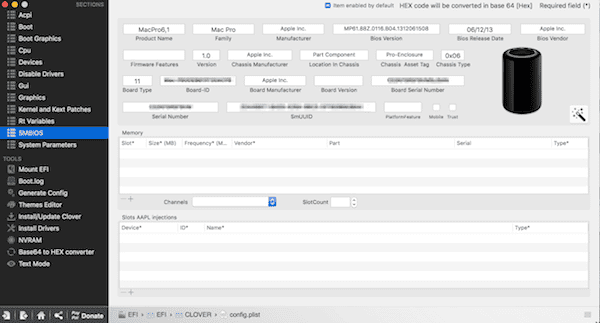

In another word, the Boot ROM Version hasn't been changed. Then, 3 times power off automatically in a short period, end up with a normal OS X startup. It got a flashing LED light indicating the firmware was about to be updated. sudo bless -mount / -firmware /MBP91_00D7_B00.scap -verbose -recovery Thus, I've no idea why High Sierra installer failed to update the EFI firmware at the very first time.Īccording to the chapter 2.0 How Does a Mac Update Its EFI Firmware & How Do You Find Your EFI Version of The Apple of Your EFI, with the following command bless, the file MBP91_00D3_B0C_LOCKED.scap extracted from mac2015002efiupdate.dmg, which downloaded from, and the file MBP91_00D7_B00.scap extracted from Install macOS High Sierra.app, it executed successfully. usr/libexec/efiupdater finished with status: 0

Writing firmware update installed cookie (/Volumes/MacSSD/macOS Install Data/.FirmwareUpdateInstalled) Volumes/bless.YdD7/EFI/APPLE/FIRMWARE/MBP91_00D7_B00.scap created successfully If look into previous log of EFI updating, it seems they are quite normal. Operation: Verify firmware failed, Failure Reason: Error Domain= Code=512

Key info in ia.log is as following.Ĭlearing automation and attempting to rebless.įailed to get disk for UUID specified for rebless. Here comes the detail.Īttempt 1 - update it by updating macOS from 10.12.6 to 10.13.2įailed with error message "An error occurred while verifying firmware". Now you should be able to proceed with the "createinstallmedia" instructions in the original Apple article (assuming Apple fixed the Sierra installer).In short, the firmware cannot be updated either by upgrading macOS to High Sierra or by bless manually. If you need to use the latter command, then after it completes drag the actual installer from "/Applications/macos" to the main "/Applications" folder. If there are no errors and you don't see the El Capitan installer in the Applications folder, then you may need to add another folder to the end of the command like "/Applications/macos": sudo pkgutil -expand /Volumes/InstallMacOSX/InstallMacOSX.pkg /Applications/macos pkg file): sudo pkgutil -expand /Volumes/InstallMacOSX/InstallMacOSX.pkg /Applications You should end up with the command looking something like (yours may look a bit different for the path to the. Then continue typing on the same line: /Applications pkg file onto the Terminal window to auto-fill the path to the. Start by typing the following leaving at least one space after "-expand ": sudo pkgutil -expand You can use a Terminal command to manually extract the installer. pkg into an app - an installer app never shows up in my Application folder. When I click on the InstallOS.pkg it opens an installation window, but does not convert the.


 0 kommentar(er)
0 kommentar(er)
